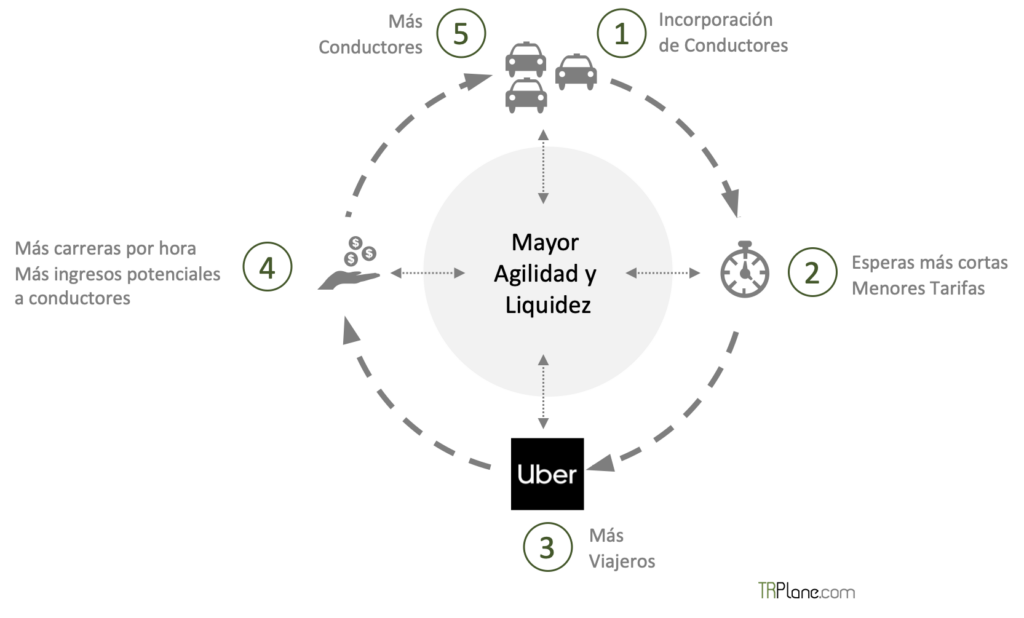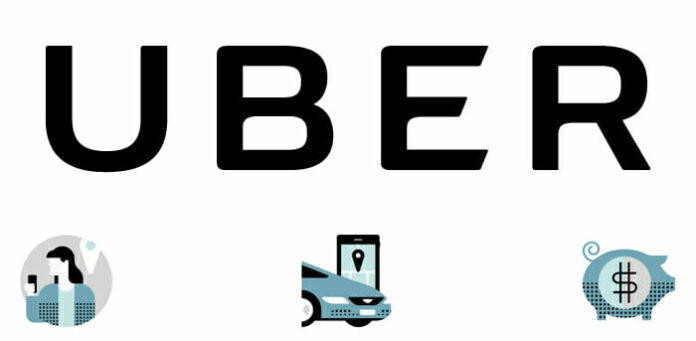Uber it has become the archetype of a company capable of growing based on the aggregation of supply and demand.
Initially, Uber attracted independent drivers (the offer) to its platform by offering a guaranteed source of customers. For drivers without a centralized request capture system, it could be difficult to find customers and required them to be idle near hotels and airports in order to capture demand.
With Uber, those drivers could receive the requests at any time, giving them a way to earn money during the downtime between trips.
At the same time, Uber attracted users (demand) by providing them with a guaranteed driver. When taxi services dominated non-public transport, it could be a challenge, even in major cities, to find transportation during non-optimal working hours or in bad weather (surveys showed an average of 7% fewer taxis in the road when it rained in New York).
To make sure the customer had more control Uber developed a user application using a model that would come to be known as "demand price bands." In hours or days of greatest request, the prices of the trips increase, increasing the offer of drivers and increasing accessibility for demand.
Bringing these two sides of the market together created a virtuous circle of growth.

With every new driver Uber added to the platform, the geographical reach of the application increased: there were more drivers in more places, which means that the wait was shorter to get a ride offer for Uber customers.
The shorter the wait for a trip, the more users it attracted Uber. The more users it attracted Uber, it also attracted more drivers, further reducing the time to get a ride and increasing geographic reach.
The capacity of Uber to aggressively add drivers and passengers to its platform through marketing and promotions fueled those network effects in each new market it entered, and the resulting virtuous cycles fueled the company's rapid growth around the world.
The power of Uber on supply and demand, the guaranteed, faster and cheaper rides than a taxi that it can offer to both customers and drivers, has been its key competitive advantage over competing ride-sharing companies.
As smaller competitors have emerged to challenge Uber in local markets, the ability to Uber to manipulate its own economics of supply and demand has helped it stay competitive.
when fighting against Gett In New York, for example, Uber simply increased its driver incentives and ride discounts for Uber customers. That lured drivers, some of whom were simultaneously working for other services, back to Uber, where they could make more money. It also brought back customers, who could easily use any of the services.
That strategy has been less effective against Lyft, which has become increasingly able to offer similar incentives within its market, competing with Uber on price and driver availability.
Since there is little friction for drivers or users to switch from one app to another, there is little to stop someone from choosing one app over another.
Ultimately, to win against LyftUber is betting not only on establishing its protective barriers in its market, but also reinvesting in its brand, hoping its familiarity could give it an edge in a newly commercialized ride-sharing industry.
In parallel, it is also investing in new service models and verticals, such as freight forwarding and food delivery.




